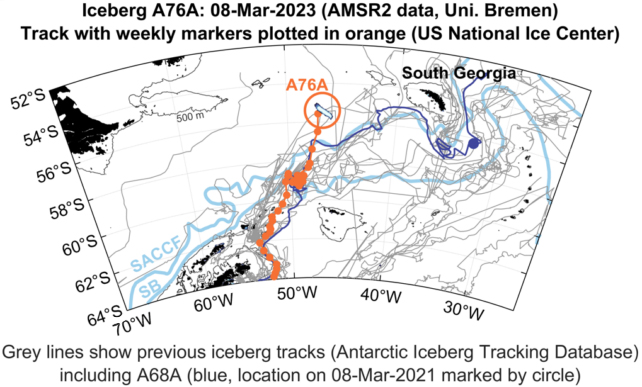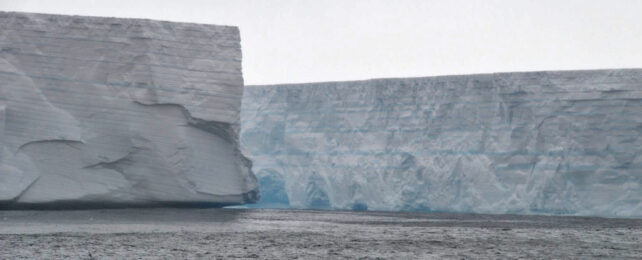Researchers have revealed the first aerial footage of the massive iceberg that broke free from an Antarctic ice shelf in January.
Designated A81, the Greater-London-sized chunk of ice had finally calved from Antarctica's Brunt Ice shelf a decade after the first cracks appeared, joining other glacier fragments floating in the Weddell Sea. This is the second giant split recorded in two years, and while calving is a natural process in this frozen landscape, it can still wreak havoc on its surroundings.
"An iceberg of this size will have a big impact on the ocean ecosystems which support the rich diversity of marine wildlife found in this Antarctic region," explains ecologist Geraint Tarling. "These impacts may be both positive and negative."
The dynamic aerial footage, recorded by the British Antarctic Survey (BAS), shows just how massive this ice block is, looking like an endless sheet even from high in the air. But what we can see is still only a fraction of the iceberg's mass, with most of their bulk extending hundreds of meters into the depths.
BAS relocated an entire research station to avoid being cast adrift on the now floating piece of ice sheet. The Halley Research Station was moved 23 kilometers in 2016 after high precision GPS instruments and satellite data revealed the Chasm along the Brunt Ice shelf was widening.
A81 is now floating 150 kilometers away from where it was once attached to the polar continent. Not only does it pose a threat to human activities, icebergs of this size can massively influence local ecology.
"As the iceberg melts, it will release a lot of nutrients that could benefit the growth of microscopic plants such as phytoplankton at the base of the oceanic food webs," says Tarling from BAS.
"The negative side is that this same melting, at such a large scale, dumps lots of freshwater into the ocean which decreases salinity levels and makes the waters unsuitable for many phytoplankton and the zooplankton that feed on them. These effects could then cascade up the food web to fish, birds, seals, and whales."
The BAS team continues to closely monitor A81 along with other icebergs in the area, including A76a, to stay abreast of any risks they may pose. A81 is expected to follow the Antarctic coastal current, but A76a is veering towards some islands. At 3200 square kilometers A76a is currently the largest floating iceberg on Earth, twice the size of A81.
"It looks as though A76a may end up heading west of South Georgia," notes director of fisheries and environment for the South Georgia government, Mark Belchier.
"Our major concern at the moment is the possible risk for vessels operating in the region as the iceberg begins to break up and calve smaller chunks of ice."

"If A76a continues along a trajectory towards Shag Rocks, gouging of the shallow seabed found there may be catastrophic for biodiverse seabed communities, including nursery areas for valuable fish stocks," adds Tarling.
